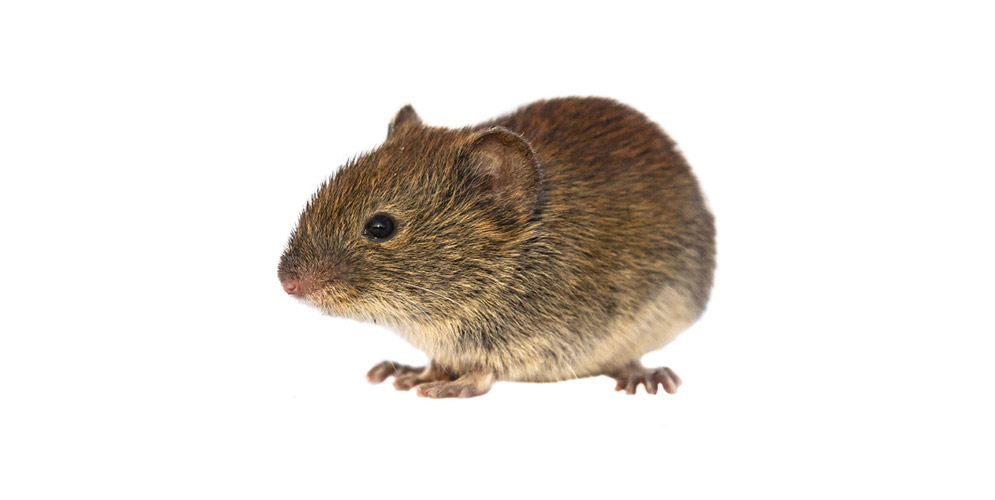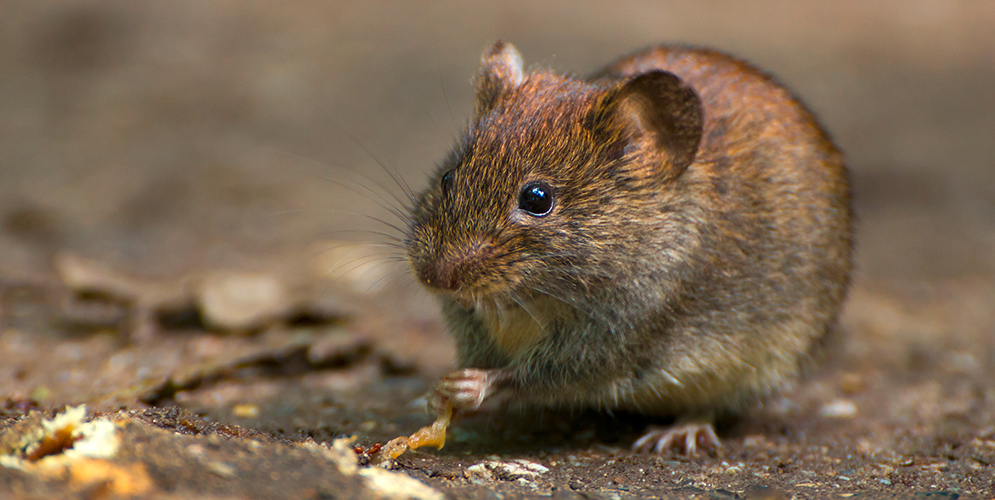Common vole
(Microtus arvalis)
Biology:
Like the water vole, common voles are a member of the vole family and primarily inhabit permanent pastures (open cultivated landscapes used for agriculture, farmland, meadows and pastures with short grass). They are herbivores which form colonies and create burrows in the ground up to a depth of 50 cm. The entrances to their burrows are connected to one another via a branched system of walkways above the ground, which can be several metres long in some instances.
The creatures have a rather stocky build with a wide head and small ears. They are approximately 9 to 10 cm long with a 4 cm tail. The colour of their fur is very variable – mostly yellow-brown or yellow-grey on top, fading to light grey on the underside of the body. The females have 3 to 7 litters in a year, each with 3 to 9 young. With their excellent fertility, the creatures are prone to mass reproduction. When this occurs, it is sometimes referred to as a “mouse year”. The creatures generally live outdoors but they sometimes also use stables, barns, sheds or houses as temporary winter homes.
Damage:
The common vole can be a major pest in agriculture, particularly in years when mass reproduction occurs, as they feed on green parts of plants, root crops, seeds, roots, bulbs and bark.


